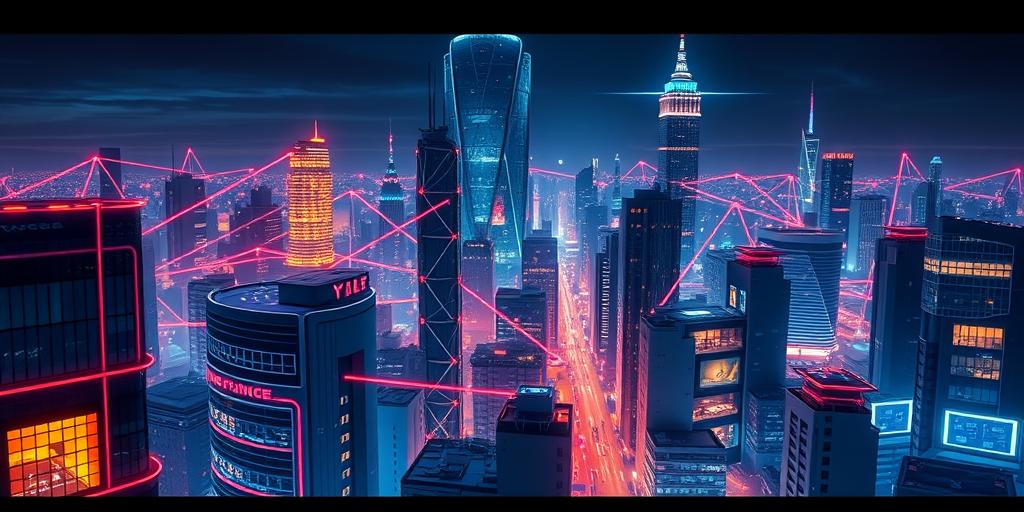Have you ever wondered how your smart devices magically connect and communicate with each other? This isn’t science fiction; it’s the Internet of Things (IoT), and it’s changing the world as we know it. Get ready to unlock the mysteries of IoT, and discover how this revolutionary technology impacts everything from your home appliances to global industries! We’ll explore the core concepts, real-world applications, and future possibilities of this mind-blowing network of interconnected devices.
What is the Internet of Things (IoT)?
The Internet of Things (IoT) refers to the ever-growing network of physical objects—things that are embedded with sensors, software, and other technologies for the purpose of connecting and exchanging data with other devices and systems over the internet. Think of it as a global network of “smart things,” seamlessly communicating and interacting with each other, without human intervention. This creates powerful opportunities to automate processes, improve efficiency, and gather crucial insights from a vast array of data points. The IoT isn’t just about smart homes; it’s about smart cities, smart factories, smart agriculture, and a whole lot more. Understanding the fundamentals of IoT is key to understanding the future of technology.
How IoT Devices Communicate
IoT devices use various communication protocols to exchange data. These protocols determine how data is packaged, transmitted, and received. Common protocols include Wi-Fi, Bluetooth, Zigbee, Z-Wave, and cellular networks like 4G and 5G. The choice of protocol often depends on the specific requirements of the application, such as range, power consumption, and data rate. Some IoT devices may use multiple protocols for enhanced connectivity and reliability. For example, a smart thermostat might use Wi-Fi to connect to the internet for remote control, while using Zigbee to communicate with other nearby smart home devices.
The Building Blocks of IoT
At its core, an IoT system is composed of several key components working together seamlessly. These include the hardware—the physical devices themselves—which contain sensors to capture data and actuators to effect changes in the physical world. The software is the brain behind the operation, processing data and triggering actions based on pre-defined rules or algorithms. And finally, the network is the invisible backbone, enabling communication between these diverse components. Each piece plays a critical role in creating a fully functional IoT ecosystem.
Real-World Applications of IoT
The applications of IoT are extensive and span diverse industries. From smart homes and wearables to industrial automation and healthcare, the opportunities seem endless. Imagine a world where your refrigerator automatically reorders groceries when supplies run low, or where sensors in a hospital bed monitor a patient’s vital signs and alert medical staff in case of emergencies. These scenarios represent just a fraction of the possibilities offered by this transformative technology. But the growth of IoT isn’t without its challenges.
Smart Homes and Wearables
Smart homes are one of the most visible and widely adopted applications of IoT. Smart thermostats, lighting systems, security cameras, and appliances all integrate seamlessly, creating a comfortable, energy-efficient, and secure living environment. Similarly, wearables—smartwatches and fitness trackers—use sensors to monitor health data such as heart rate, sleep patterns, and activity levels, providing valuable insights and empowering individuals to make healthier choices. The convenience and personalized experiences afforded by smart homes and wearables are driving their rapid adoption globally. What exciting innovations will this sector bring next?
Industrial Automation and Predictive Maintenance
Industries are leveraging IoT to streamline operations and optimize productivity. In manufacturing, sensors monitor equipment performance, detecting anomalies that might indicate potential failures. This allows for predictive maintenance, preventing costly downtime and ensuring continuous operation. Furthermore, IoT enables remote monitoring and control of industrial processes, improving efficiency and reducing operational costs. This approach enhances manufacturing processes and reduces unexpected halts to production. The future of industrial automation is intricately linked to the continued expansion of IoT applications.
Security and Privacy Concerns in IoT
While offering numerous benefits, IoT also raises important security and privacy concerns. The interconnected nature of IoT devices creates potential vulnerabilities that could be exploited by malicious actors. Data breaches, unauthorized access, and denial-of-service attacks are all potential risks. Furthermore, the vast amount of data collected by IoT devices raises privacy concerns, particularly regarding the use and storage of personal information. Addressing these concerns requires robust security measures, including encryption, authentication, and access control, as well as clear privacy policies and regulations.
Protecting Your IoT Devices
Securing your IoT devices is crucial to protecting your privacy and data. Choose reputable brands with strong security track records. Change default passwords to strong and unique ones. Keep your devices’ firmware up-to-date to patch security vulnerabilities. Avoid connecting your IoT devices to unsecured Wi-Fi networks. And always be mindful of the data you share with IoT devices and the companies that manufacture them. By taking proactive steps, you can significantly reduce your risk.
The Future of IoT
The Internet of Things is constantly evolving, with new applications and technologies emerging at a rapid pace. The integration of artificial intelligence (AI) and machine learning (ML) is transforming IoT devices into even more intelligent and responsive systems. 5G technology is enabling faster data transmission and lower latency, further expanding the possibilities of IoT applications. As the number of interconnected devices continues to grow exponentially, the potential for innovation is virtually limitless. What will the future hold for the Internet of Things?
Ready to dive deeper into the fascinating world of IoT? Explore our resources and learn how you can leverage this technology to enhance your life and business! Click here to discover more.




